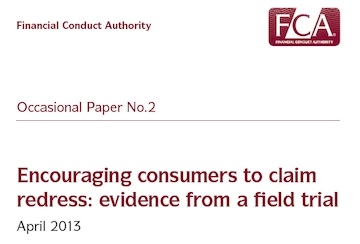
Redress letters should use bullet points to highlight important parts and be followed up with reminders in order to receive maximum response.
In a paper published by the Financial Conduct Authority today, the FCA looked at evidence from a field trial on how to encourage consumers to claim redress.
Using the two methods above saw response rates increase by 12 per cent, equivalent to 20,000 extra people claiming redress.
In 2011/12 over £150m worth of redress was paid out to consumers, excluding payment protection insurance claims.
However, the FCA wanted to understand why some customers did not respond to redress letters, causing them to miss out on money they may be owed.
{desktop}{/desktop}{mobile}{/mobile}
To test its theory, the FCA compiled different types of letters which were being voluntarily sent to 200,000 consumers about a firm failing a sales process.
Seven different changes were made to random letters including reminding the reader to act quickly, using the FSA logo, salient bullet points, reducing the text, using the chief executive's signature, including a message that the process takes five minutes and sending a reminder letter.
The change that made the most difference was the use of salient bullet points which improved response rates by 3.8 per cent. Reducing the text and reminding readers how quick it could be to claim increased responses by 1.4 per cent. The control unchanged letter received a response rate of 1.5 per cent.
Receiving a letter with the chief executive's signature caused a decrease in responses, particularly by women.
The 'best letter' was one which used salient bullet points and was followed up with the same letter sent again three weeks later.
• Want to receive a free weekly summary of the best news stories from our website? Just go to home page and submit your name and email address. If you are already logged in you will need to log out to see the e-newsletter sign up. You can then log in again.

